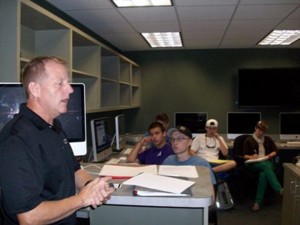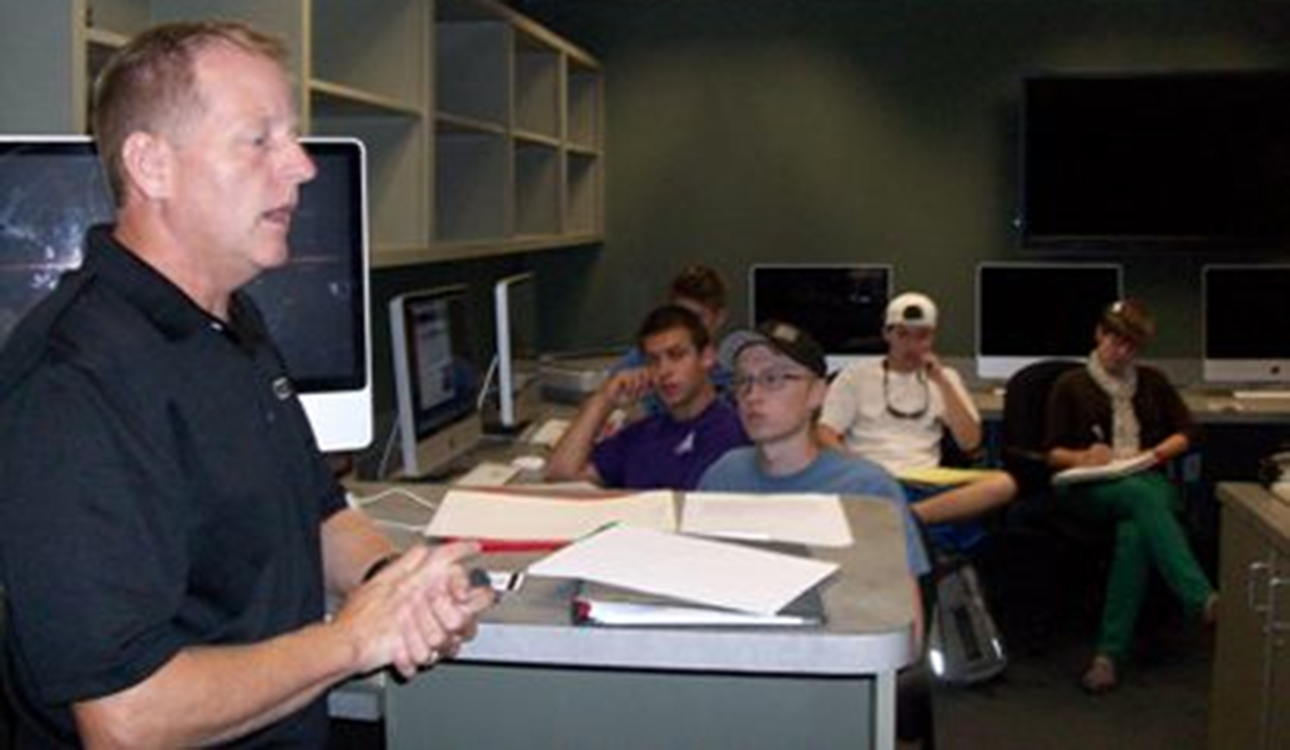
Courtesy photo
By Warren Tonack
Contributor
Rocky Bridges has worn a lot of hats, including marketer, assignment manager and photojournalist. Altogether, Bridges has more than 20 years of experience in the television news industry.
And right now, the industry is changing.
“The industry is a whole different ballgame,” he said. Bridges is currently the chief photographer at the local news station KCEN.
When he first started photography in 1994, Bridges said he recalls lugging around a $40,000 camera that weighed as much as a toddler. Typewriters and document cameras for writing and projecting scripts, respectively, were a staple at every news station. Everything was big, complicated and expensive.
Today, Bridges is able to carry around an HD camera that weighs only a few pounds and costs around $9,000. Instead of typewriters, there are computers, and instead of document cameras, there are digital teleprompters. Everything is digital, smaller and cheaper. Stations are able to do so much more with so much less, he said.
Grapevine junior Garrett Battershell, who is double-majoring in both computer and management information systems, said the technology revolution is “making journalism more mobile. [Bridges] could pull up his iPhone and just take a picture on the spot. They aren’t limited, and locations are endless.”
Now, most everyone walking on the street has the equipment in his or her pocket to be a photojournalist.
Bridges said the Internet has also introduced an element to the industry that did not exist 20 years ago: social media. Twitter and Facebook have become huge outlets for KCEN, Bridges said. Through Twitter and Facebook, KCEN can follow its competitors 24/7 and see what stories are being reported as they are still happening.
Social media has become a powerful tool for audience interaction, too.
Bridges recently posted a picture of a mysterious, four-legged spider found inside the news station onto the KCEN Facebook page, with a caption: “Name that spider.” In a matter of days the picture had received more than 15,000 views and about 200 comments. Bridges said he was shocked to see how people responded to such a trivial post.
Furthermore, Bridges said, people are beginning to help KCEN with its news in the form of user-generated content.
As breaking news is taking place, witnesses are posting first-person content to KCEN’s Facebook page.
This helps the station gain pictures, videos and details that would be impossible to attain otherwise. A news team cannot be omnipresent, he said, but thanks to social media, they do not have to be.
Victoria junior Justin Meyer heard Bridges speak when he came to Baylor on Sept. 10 to address students in a class about these changes.
“I’m not surprised,” Meyer said. “Everything is technology based. It seems to flow.” There is a natural movement toward the Internet, and the industry is learning how to see the Internet as an opportunity instead of a threat.
Despite the changes, Bridges said, he believes the industry has adapted and will continue to do so.
“Business is good again. I think a lot of it is [we] are learning to play the Web,” he said.






